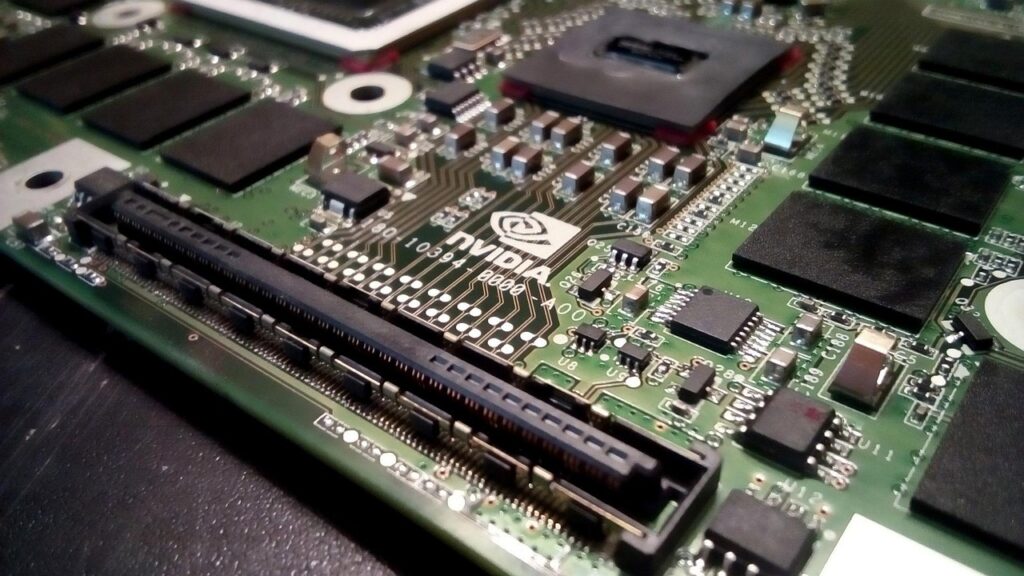This week, all eyes are on Nvidia as it prepares to release its mid-week earnings report. Nvidia, once a niche name known only to tech aficionados, gaming enthusiasts, and a handful of savvy investors, has now emerged as a central player in the tech stock bull market, largely due to its pivotal role in the AI revolution.
In the last fiscal year, Nvidia reported a revenue increase to $61b … a jump yoy of over 100% with an even greater increase in income of 500%, jumping from $4.4b to almost breaching $30.0b, driven by its AI and data centre segments. The company’s net income surge, highlights its strong profit margins at almost 70%. Investors are keenly watching whether Nvidia can maintain its momentum in the face of increasing competition and market saturation. The company’s GPUs (graphics processing units) are now crucial for AI training and inference, accounting for 80% of the market share in this segment. The company’s performance will offer critical insights into the investment levels in AI-supportive chips, potentially forecasting broader trends in the sector.
Recent tech stock increases have been significantly propelled by advancements in AI, making Nvidia’s report a bellwether for future market directions. Analysts are predicting a potential 30% year-over-year revenue growth or even more eye-popping with an expected 240% increase yoy for the upcoming quarter, reflecting robust demand for AI-related technologies. If the market continues to receive results with growth like this, the stock actually look pretty reasonably priced, if not cheap.

Nvidia is up 100% so far this year!
China’s Housing Market Boost
Last week ended on a high note with the Chinese government unveiling a substantial stimulus package worth 1 trillion yuan (approximately $140 billion) aimed at revitalizing its struggling real estate market. Key measures include easing mortgage rates and encouraging state-owned enterprises (SOEs) to step up investments.
The new policy allows mortgage rates to drop by as much as 50 basis points, aiming to lower the effective interest rate and attract investors back into the real estate sector. China’s real estate market, which contributes about 30% to the country’s GDP, has been in a slump, with property sales declining by 20% year-over-year in the first quarter of 2024.
These initiatives are designed to improve developers’ balance sheets, enabling them to initiate new property developments. While it will take time for these measures to impact the numbers, the strong backing of the Chinese Communist Party has already shifted market sentiment. Base metals, particularly copper, saw significant gains, with copper prices rising by 3% to $5.20/lb following the announcement. The increased demand for electrical wiring in new constructions has caused a short squeeze on major commodity traders, highlighting the far-reaching implications of China’s housing market policies on global markets.
Australian Federal Budget Review
The Australian Federal Budget, released last week, marked Treasurer Jim Chalmers’ third budget and emphasized zero emissions and tax cuts. Despite the tax cuts, a $9.3 billion surplus was achieved, providing some relief to households facing interest rate pressures. The surplus, representing about 0.4% of GDP, was largely due to higher commodity prices and robust employment figures.
The budget allocated $32.2 billion to the ‘Future Made in Australia’ and ‘Guarantee of Origin’ schemes, aiming for a total of $65 billion in investments by 2030. These initiatives focus on hydrogen and renewable energy projects, as well as emissions trading. The zero emissions strategy includes significant co-investments into large-scale renewable energy projects, with $10 billion earmarked for hydrogen development alone.
Beyond headline-grabbing initiatives like a $300 energy rebate, student debt relief, and support for renters and SMEs, student debt relief amounting to $1.2 billion, and $500 million in support for renters and SMEs. The impact on the mining sector is substantial, with a projected increase in mining investments by 15% over the next five years due to favourable policies and global demand for Australian minerals.
BHP’s Rejected Bid for Anglo American
BHP’s latest $64.4 billion takeover bid for Anglo American was rejected, despite sweetening the offer by an additional $4 billion. The Anglo American board argued that the offer undervalued the company, citing its strong portfolio and recent performance improvements.
BHP’s proposal required Anglo to divest its platinum and iron ore assets before the takeover, a condition deemed unfavourable. Anglo America’s platinum assets have seen a 20% increase in production, while its iron ore segment has reported a 15% rise in revenue. Analysts suggest that BHP might need to reconfigure the offer, possibly purchasing the platinum and iron ore assets and divesting them post-deal to make the acquisition more appealing.
The recent 10% rally in copper prices, reaching a recent high of $5.20/lb which is a rally of 35% for the year, which would have further complicated the bid’s prospects, as Anglo’s copper assets have become increasingly valuable. The global demand for copper, driven by electric vehicle (EV) production and renewable energy infrastructure, is projected to grow by 5% annually over the next decade.
Star Entertainment Group Trading Halt
Star Entertainment Group, the casino operator, has entered a trading halt amid numerous regulatory inquiries and operational challenges. The company’s stock has plummeted from a multi-year high above $6 to below 50 cents, reflecting investor concerns over its future.
Operating venues in Sydney, Brisbane, and the Gold Coast, Star has acknowledged multiple preliminary, non-binding offers. Sources indicate that a leading bidder is a consortium involving investors from the Hard Rock Café group. This pause in trading comes as the company navigates significant scrutiny, including compliance with stringent regulatory requirements to maintain its casino operations.
The company’s revenue has declined by 40% year-over-year, and it faces potential fines exceeding $100 million due to regulatory breaches. The outcome of these inquiries will be critical in determining Star’s path forward and potential recovery. Analysts predict that a successful acquisition or strategic partnership could potentially stabilize the company’s operations and restore investor confidence.




